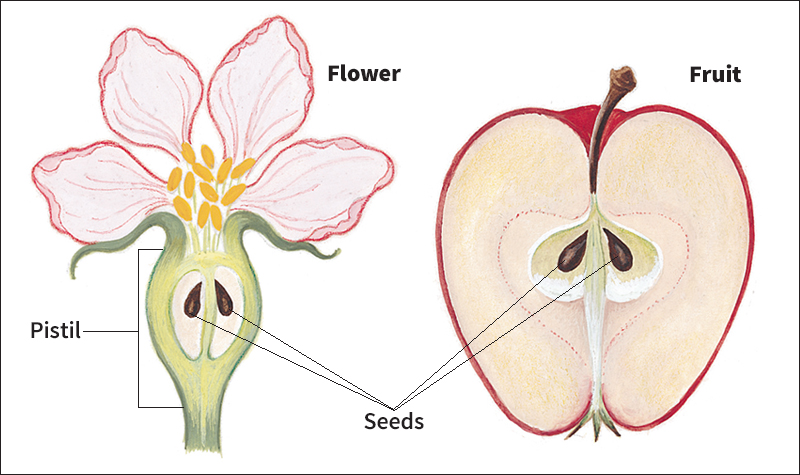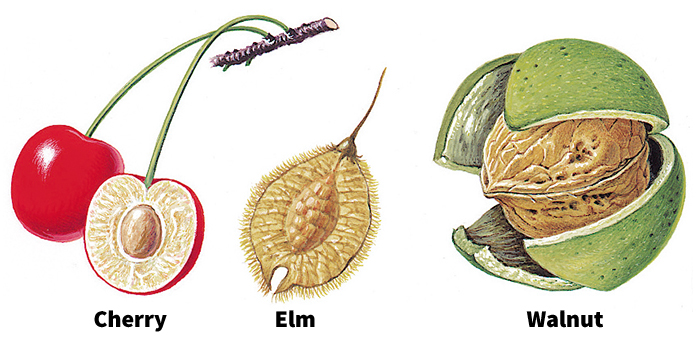Angiosperm << AN jee uh spurm >> is the technical name for flowering plants. Angiosperms make up the vast majority of all plant species (kinds). They also occur in most of the world’s environments, including Arctic tundra, deserts, and rain forests. Among the most important angiosperms are broadleaf trees and crop plants.

Angiosperm flowers contain both male reproductive organs called stamens and female reproductive organs called carpels. Stamens produce pollen grains that carry sperm (male sex cells) to the carpels. Carpels contain ovules, or eggs, that become seeds after fertilization by sperm. The carpels develop into fruits.
Scientists divide the angiosperms into several groups called classes. The two largest classes are the monocotyledons, or monocots, and the eudicotyledons, or eudicots. Monocots grow from seeds that contain one seed leaf called a cotyledon. All other angiosperms, including the eudicots, have two cotyledons in their seeds. Flowers with two cotyledons are sometimes called dicotyledons, or dicots. Scientists once treated all dicots as belonging to their own class. They now know that many dicots are only distantly related to others.

